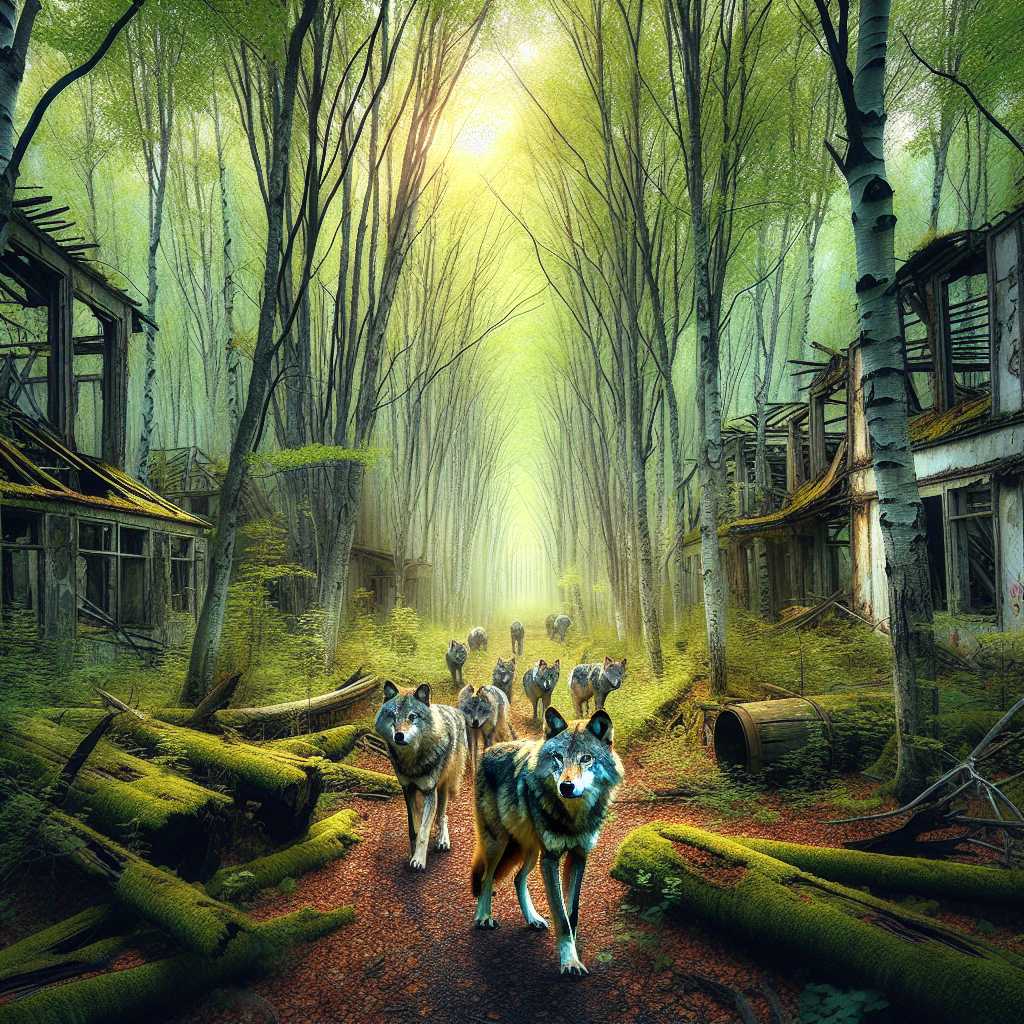## Chernobyl Mutant Wolves: Separating Myth from Reality
In the narrative of Chernobyl’s aftermath lies an eerie tale of the desolation that followed the nuclear disaster, and the flora and fauna that subsequently inherited the land. Among them, the Gray wolves (Canis lupus) have gained significant attention due to reports of mutations and population increases. With years of study and environmental observations, scientists are piecing together the effects of radioactive fallout on these resilient creatures. This article aims to delve into the reality behind the “Chernobyl mutant wolves”, by analyzing scientific studies, examining ecological impacts, and assessing the broader implications for wildlife in radioactive zones.
Origins of the Mutation Myth
Following the catastrophic accident at the Chernobyl Nuclear Power Plant in 1986, a radioactive cloud blanketed a vast area surrounding the site, leading to massive evacuations and creating a no-man’s-land known as the Exclusion Zone. Early on, there were reports of wildlife mutations stemming from contamination. Among these reports were mutant wolves alleged to possess gross deformities and aberrant behaviors, stirring imaginations and fears akin to science fiction scenarios.
Scientific Investigation into Radiation Effects on Wildlife
Despite the grim expectations, extensive scientific research has provided evidence suggesting that wildlife, including wolves, have not only survived but flourished in the Chernobyl Exclusion Zone. The absence of human presence seems to have had a more pronounced effect on wildlife proliferation than radiation.
Research has revealed that while radiation does cause genetic mutations in organisms, its impact on wolves is much less dramatic than folklore suggests. There have indeed been instances of animals with unusual physical traits within the Zone; however, concrete connections between these traits and radiation levels are complex and not as direct as conjecture would imply.
Population Growth Among Chernobyl Wolves
One clear phenomenon noted by researchers is a significant increase in wolf population density within the Exclusion Zone. Studies comparing these densities with non-contaminated areas found that numbers could be seven times higher inside the Exclusion Zone.
These findings are widely attributed to reduced human activity, permitting natural ecosystems to recover and letting wolf populations expand unhindered by hunting, trapping, or habitat destruction. This unusual population density does not necessarily mean wolves within Chernobyl are flourishing due to mutations; perhaps, it points to their adaptability and the resilience of natural processes even under adverse conditions.
Health and Longevity of Wolves Living in Radioactive Areas
The health implications for wolves residing in such a contaminated environment remain under investigation. Experts believe that living within a radioactive area may increase an individual animal’s chance of developing tumors, cataracts, or suffering adverse mutations that could curtail life expectancy.
Long-term data might reveal changes in wolf life spans or disease rates over successive generations. As such animals can travel far beyond the boundaries of the Exclusion Zone, monitoring and studying these wolves can also offer insights into how contaminants spread through biotic vectors.
Behavioral Changes and Ecosystem Roles
In regards to behavior, studies indicate that Chernobyl wolves do not display notably aberrant behaviors unrelated to their regular survival strategies. Predation patterns seem consistent with expectations for healthy ecosystems that support adequate prey availability.
Moreover, wolves play crucial roles in ecological dynamics anywhere they reside. High population densities within the Exclusion Zone could therefore significantly influence trophic cascades — where apex predators affect plant and animal populations through their feeding activities — further altering the landscape many consider eerily frozen in time since 1986.
Comparisons With Other Radioactive Zones Worldwide
Looking broader than just Chernobyl offers a more complete understanding of how radiation may affect wildlife globally. Comparisons of animal populations in areas like Fukushima Daiichi (post-2011 disaster) contribute additional data points for researchers investigating human exclusion zones and residual impacts from nuclear contaminations.
The Place of Radiation in Natural Selection
Ultimately, while mutation is a fundamental component of evolution by natural selection, it should be noted that most mutations are either neutral or harmful rather than beneficial. The prevailing notion is that species living within radioactive zones like Chernobyl will continue to undergo mutations at perhaps higher rates; yet it remains to be seen what evolutionary paths they may take if any clear advantages from such changes arise.
